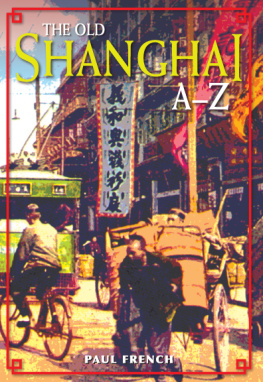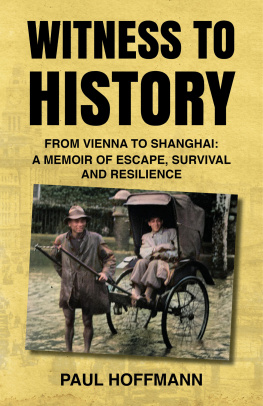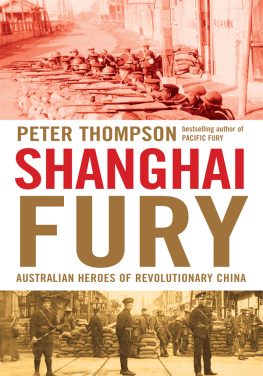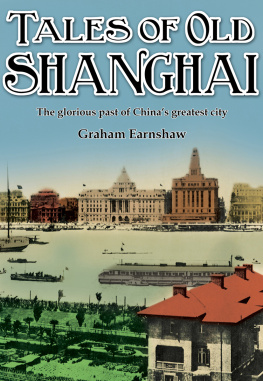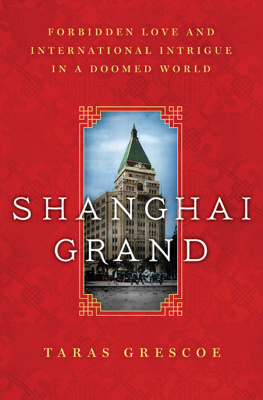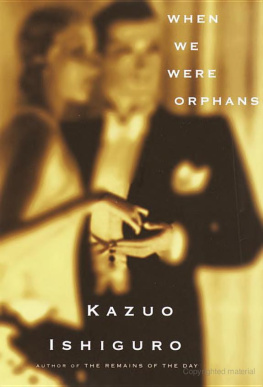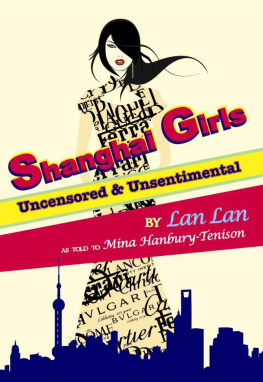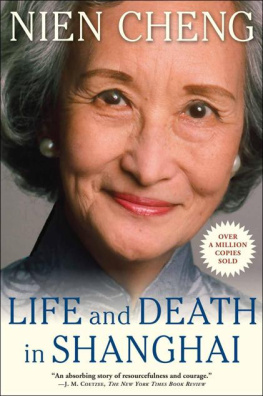Published by State University of New York Press, Albany
2020 State University of New York
All rights reserved
Printed in the United States of America
No part of this book may be used or reproduced in any manner whatsoever without written permission. No part of this book may be stored in a retrieval system or transmitted in any form or by any means including electronic, electrostatic, magnetic tape, mechanical, photocopying, recording, or otherwise without the prior permission in writing of the publisher.
For information, contact State University of New York Press, Albany, NY
www.sunypress.edu
Library of Congress Cataloging-in-Publication Data
Names: Bernstein, Lisa, 1964 editor. | Cheng, Chu-chueh, 1964 editor.
Title: Revealing/reveiling Shanghai : cultural representations from the twentieth and twenty-first centuries / edited by Lisa Bernstein, Chu-chueh Cheng.
Description: Albany : State University of New York Press, [2020] | Includes bibliographical references and index.
Identifiers: LCCN 2020000972 (print) | LCCN 2020000973 (ebook) | ISBN 9781438479255 (hardcover : alk. paper) | ISBN 9781438479262 (ebook)
Subjects: LCSH: Shanghai (China)In motion pictures. | Shanghai (China)In literature. | Shanghai (China)In art. | Shanghai (China)Popular culture. | Shanghai (China)History20th century.
Classification: LCC NX653.S53 R48 2020 (print) | LCC NX653.S53 (ebook) | DDC 700/.45851132dc23
LC record available at https://lccn.loc.gov/2020000972
LC ebook record available at https://lccn.loc.gov/2020000973
10 9 8 7 6 5 4 3 2 1
Introduction
ShanghaiReal and Imaginary
L ISA B ERNSTEIN AND C HU-CHUEH C HENG
Shanghai is paradoxically encompassing and distancing, familiar and enigmatic. It has a complex history as a quasi-colonial city, the birthplace of Chinese communism, and icon of twenty-first-century capitalism. The dramatic social, political, and economic transformations the city has undergone since the end of the first Opium War in 1842 and continuing into the twenty-first century make it especially interesting for study today. In discourses of the West, East Asian countries, and even other Chinese regions, Shanghai has been portrayed as quintessentially exotic, associated with romance and decadence, and alternately labeled the Pearl of the Orient and the Whore of Asia. Changes over the past three decades have further complicated the multifarious representations of Shanghai: the city contains and defies binaries of East and West, traditional and modern, communism and capitalism, cosmopolitanism and provincialism.
While other cities of the world are likewise cosmopolitan and culturally hybrid, Opium War against the Qing dynasty, and quickly became a quasi-colonial city divided into extraterritorial concessions and settlements run by Great Britain, France, the United States, and Japan. Capitalism surged following the Revolution of 1911 and the establishment of the Republic of China, which lasted from 1912 to 1949. While Shanghai flourished financially into the 1930s due to an influx of foreign business and migrants from other Chinese regions, the citys cosmopolitanism and cultural modernity were accompanied by economic exploitation and political domination that led to extremes of wealth, poverty, dissipation, and corruption. The international population of Shanghai grew after Russias 1917 revolution and World War I; additionally, Jews from Iraq arrived via India to trade with and eventually settle in Shanghai. From 1937 to the end of World War II, Shanghai suffered social and economic decline under Japanese occupation. During the 1930s and 1940s, the extraterritoriality of the foreign concessions provided a safe haven for tens of thousands of European Jews. The foreign Shanghai of Western imperialism that reigned from 1842 to 1949 ended when the Communist Party triumphed over the Nationalists and founded the Peoples Republic of China. Shanghai experienced another dramatic change after Mao Zedongs death, with political and economic reforms that began as China transitioned to a socialist market economy. Thus, the 1980s were marked by an opening to the rest of the world, followed by Shanghais reinvention as a financially global and technologically advanced city in the 1990s and into the twenty-first century.
Because Shanghai harnesses such conflicting forces, it simultaneously inspires admiration and provokes detestation. The city has inspired an incredible array of accounts that are particularly suited to a comparative approach. Shanghai from the end of the last Chinese dynasty to the present serves as a model for analysis due to its unique position in history and politics. Historically, Shanghai, as one of the great Chinese ports, provides an opening to the Western world and other East Asian countries. Politically, the citys long and complex history of extraterritoriality lays the framework for rich, intricate, and dynamic connections between events, peoples, languages, and literatures. The manifold transformations of Shanghai over this period reflect global developments of the past hundred years. This anthology addresses ways in which texts from the twentieth to early twenty-first centuries have rewritten past and present Shanghai to reflect how the city has transmuted in the global imagination, examines why and how Shanghai resists unequivocal interpretations, and questions what constitutes the citys authenticity and identity when fictive and factual representations merge.
Revealing/Reveiling Shanghai: Cultural Representations from the Twentieth and Twenty-First Centuries brings together essays from international and interdisciplinary perspectives on representations of Shanghai in film, art, literature, theater, and mass media that reveal and challenge existent perceptions of East and West. The anthology strives to engage a contemporary global readership as it moves from an Orientalizing gaze toward a set of nuanced, heterogeneous views on Shanghai, while recognizing, as the title suggests, that the act of revealing one experience or reality is always also a veiling, or concealing, of other viewpoints and interpretations. In Mediasphere Shanghai: The Aesthetics of Cultural Production, Alexander Des Forges asserts that for twentieth- and twenty-first-century readers around the world, Shanghai is a name with real power, denoting the quintessence of modernity in East Asia, whether conceived of as glamorous and exciting, as corrupt and impoverishing, or as a complex synthesis of the good, the bad, and the ugly (1). The essays in this volume focus on literary, cinematographic, and performative representations of Shanghai that both endorse and contest ideological notions of East and West, primitive and advanced societies. These representations exhibit political amorphousness, volatile traditions, productive exchanges, and chronic threat and aggression in ways that parallel and presage the salient characteristics of our own global period, offering critical lessons for contemporary scholarship and historical understanding. By juxtaposing, analyzing, and evaluating multiple versions of Shanghai, this volume proposes a comparative method that can be applied to a wide range of literary and cultural contexts, in both academic and public spheres.


